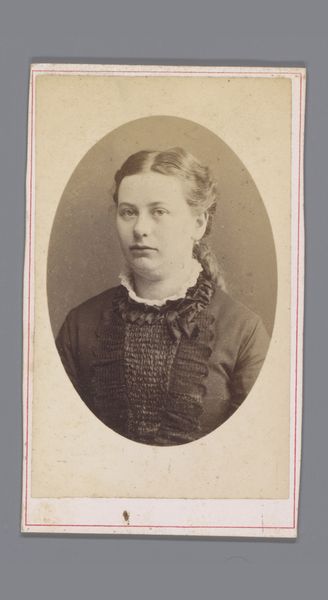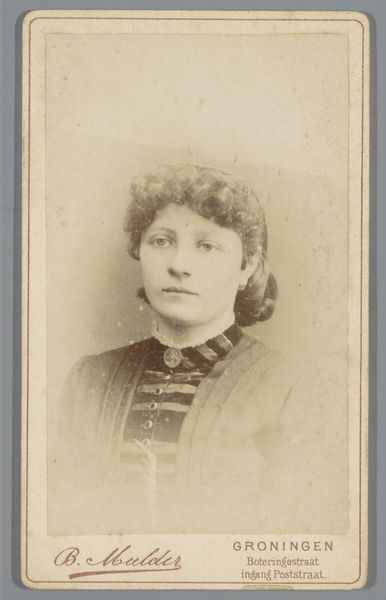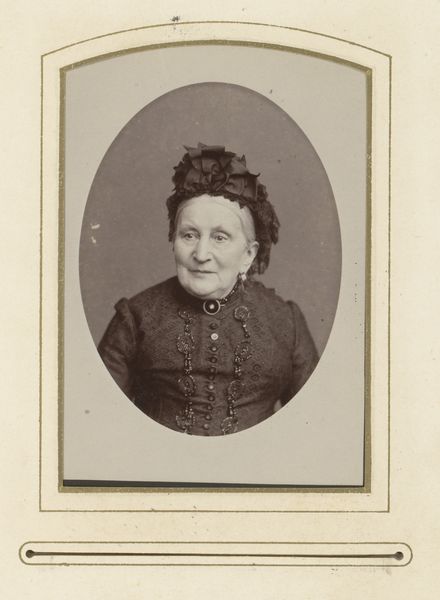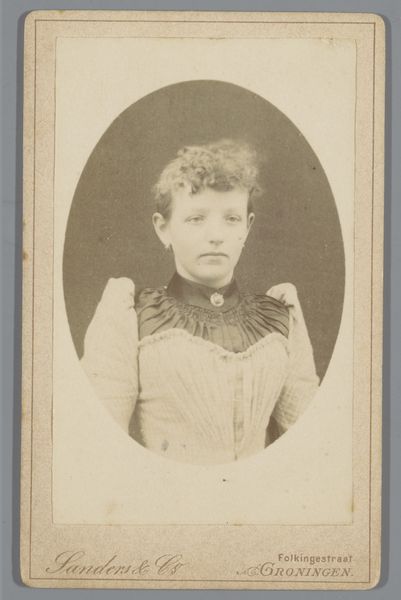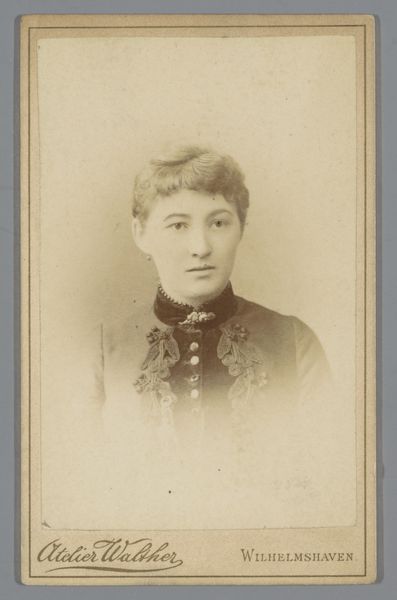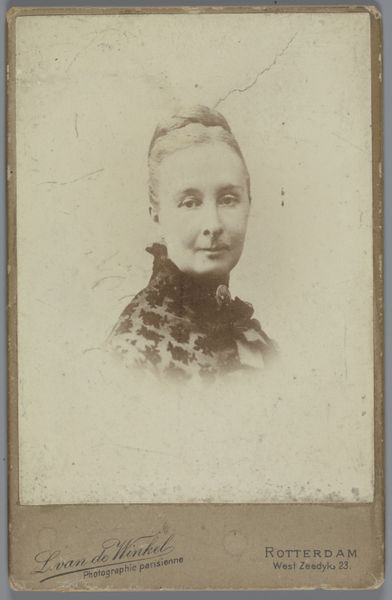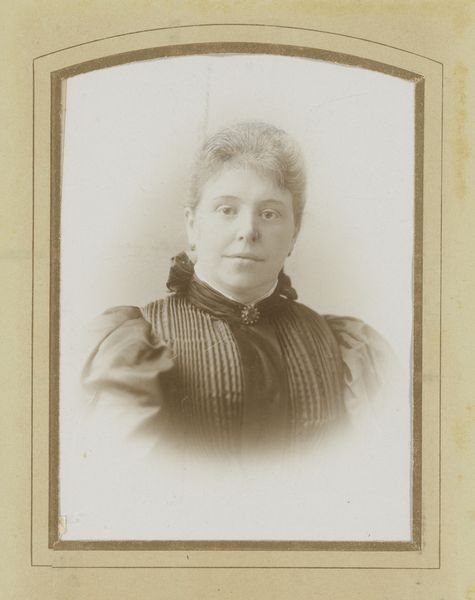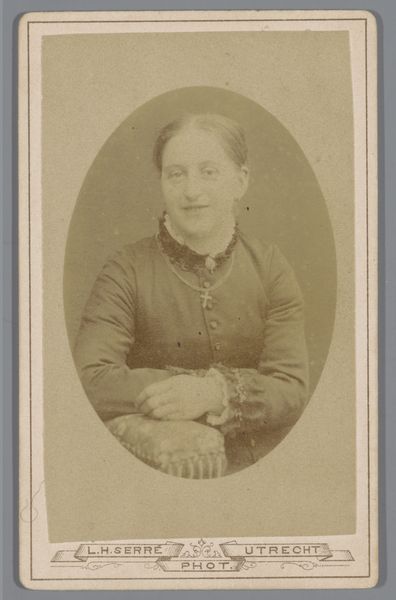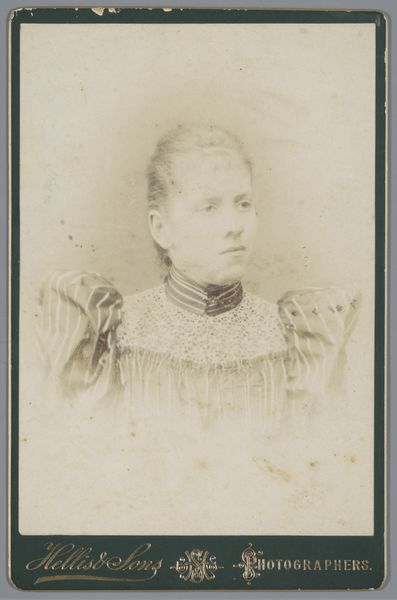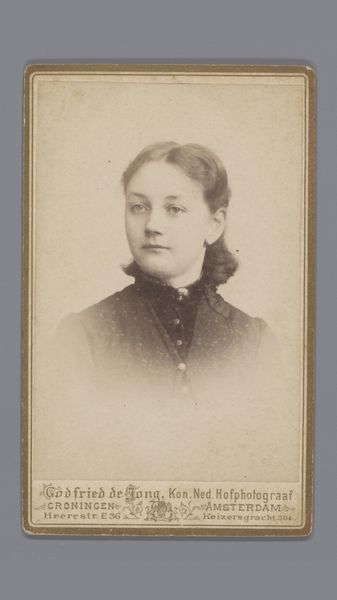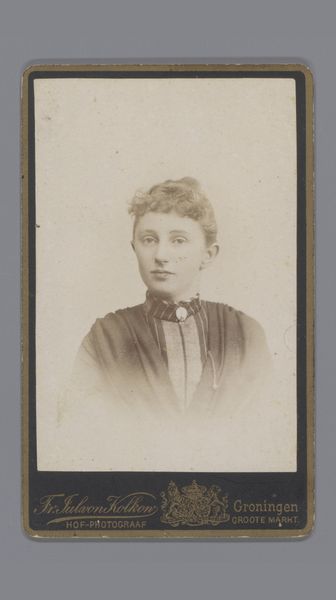
photography
#
portrait
#
aged paper
#
vintage
#
photo restoration
#
photography
#
historical fashion
#
old-timey
#
framed image
#
19th century
#
statue
Dimensions: height 105 mm, width 65 mm
Copyright: Rijks Museum: Open Domain
Editor: Here we have "Portret van een onbekende vrouw" – Portrait of an Unknown Woman – taken by Albert Greiner sometime between 1861 and 1874. It’s a photograph, currently residing at the Rijksmuseum. What strikes me is how this small, unassuming picture opens a window into a life we'll never know. What do you see when you look at it? Curator: I see a potent commentary on the representation of women in the 19th century. Consider the context: photography was becoming more accessible, yet portraiture, especially for women, remained heavily codified. How does this woman conform to or resist the expected Victorian ideals of femininity? Editor: I suppose her demure pose and somewhat plain dress seem pretty conventional for the time. Curator: Precisely. But let's look closer. Who was this woman? The title itself tells us she remains nameless, a representative of a class and a gender rather than an individual. The rise of photography coincided with increased industrialization and rigid social structures. Do you think the anonymity afforded to her by this "Portrait of an Unknown Woman," both empowers her by challenging a hegemonic idea of named portraiture, or erases her individuality, dooming her to be "anyone," essentially "no one?" Editor: That's a complicated question. It’s almost like, by being unknown, she stands for so many women whose stories were never told. Curator: Exactly! The absence of specific detail forces us to project, to consider the countless unheard voices of women from that era, women whose identities were often subsumed by societal expectations. And think about the photographer, A. Greiner, presumably a man. How does his gaze influence our reading of her? Editor: I never considered it from that angle. I was focusing so much on *her*, I failed to acknowledge him. It almost feels like we are investigating this through a male gaze… and trying to turn it on its head. Curator: A worthwhile effort! We started with an apparent observation and quickly saw its implications about the very act of image-making, the politics of representation, and our responsibility as viewers to critically engage with these histories.
Comments
No comments
Be the first to comment and join the conversation on the ultimate creative platform.
